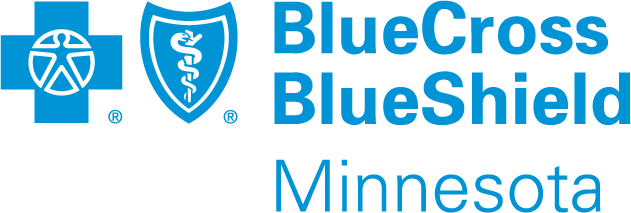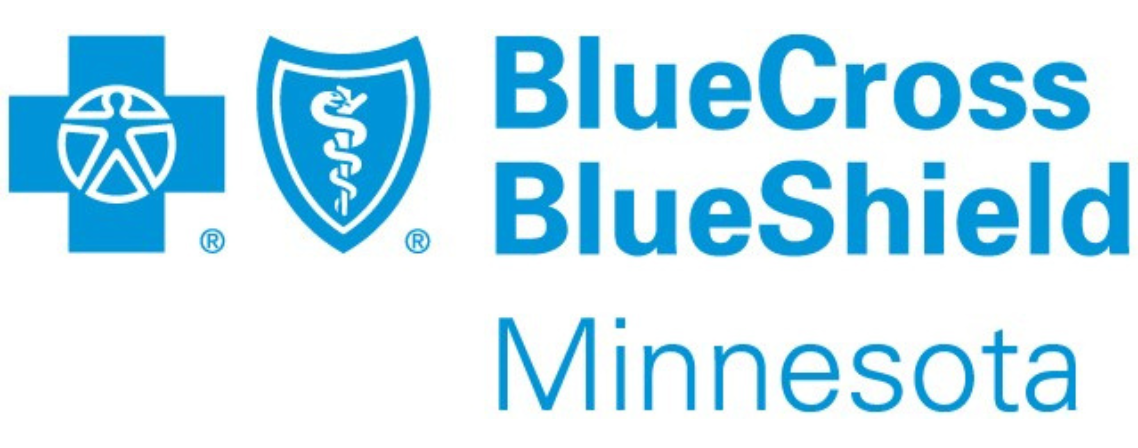How To Talk About The Risk Of Falls With the Seniors In Your Life
BLUECROSS BLUESHIELD MN
Jul 15, 2022
Minnesota - Twin Cities Metro Area
Email US
Click to Email UsAs people get older, it becomes more common to fall. It also becomes more dangerous. Every second of every day, an older adult falls, making falls the leading cause of injury for people ages 65 and older. Minnesota’s death rate from falls for this same age group is among the highest in the nation – ranking fourth of all states.
One in five falls causes a serious injury like a broken bone or head injury. (source: CDC)
Luckily, it is possible to reduce the risk of falling. Friends, family members or loved ones may not be aware of their risk or how to avoid falls, so having a conversation about it is more important than you may realize.
We talked to Lori Freit-Hammes, senior program manager at Blue Cross and Blue Shield of Minnesota, to learn more about how best to talk about the topic with the seniors in your life.
What does the data tell us?
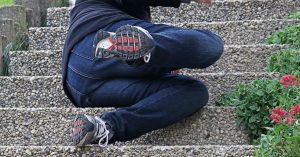 Blue Cross tracks a variety of data sources, including self-reported health risk assessments and state and national statistics. Unfortunately, the data tells us that falls are a real problem.
Blue Cross tracks a variety of data sources, including self-reported health risk assessments and state and national statistics. Unfortunately, the data tells us that falls are a real problem.
Since we know 87 percent of broken bones among seniors ages 65 and older are related to a fall, we also watch claims for fractures. And by watching this data, we noticed that fractures amongst one segment of our Medicare members increased significantly in the past few years, which caused us concern. Blue Cross has a unique role as an extension of our members’ care teams, so we look for ways to help decrease the risk of falling.
Why is a first fall so significant?
An unintentional fall that causes injury, or even a stumble or near-miss, can have a significant negative impact on a person’s physical and psychological well-being. The harsh reality is that many older adults who fall and experience injury simply do not fully recover to their previous level of health and wellness. Having fallen once is the greatest predictor of a future fall.
On top of that, fear of falling is actually a risk factor all by itself and a strong predictor of a future fall. Fear can cause people to change certain behaviors thinking they are keeping themselves safer – restricting activities and avoiding leaving their homes. However, this self-imposed premature immobility can lead to social isolation, mental health declines, the need for additional medications and more. Each change can lead to poorer health, making them even more susceptible to falling.
Why is it important to talk about falling with the seniors in our lives and how do we best approach the conversation?
Concerns about losing independence or being a burden can lead to seniors to be less than forthcoming about a past or recent fall. There is no shame in falling, but a stigma still exists.
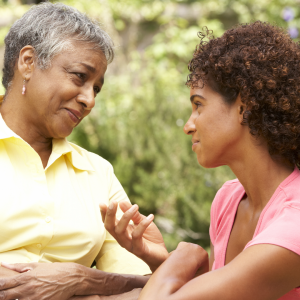 Caregivers, family members and health care professionals can start the conversation to make sure seniors feel seen and their concerns heard. Here are some tips for broaching the conversation:
Caregivers, family members and health care professionals can start the conversation to make sure seniors feel seen and their concerns heard. Here are some tips for broaching the conversation:
- Keep the tone positive and non-judgmental
- Avoid skepticism, blame or minimizing their concerns
- Focus on being a trusted person they can reach out to
- Do a little homework and be educated before the conversation
Here’s an example of how an adult might start the conversation with their older parent:
“Mom, I recently learned that individuals who are worried about falling are more likely to fall. Does this surprise you? If you are worried, it’s okay to feel nervous or anxious. It’s more common than you might believe. I also read that not talking about falls puts people at even greater risk of falling. If you’re comfortable, let’s talk about what, if any, concerns you have. I’m here for you. We can work together to reduce your chances of falling and so you can continue to live independently.”
What is Blue Cross doing to help members at higher risk of falling?
Reducing the risk of falls for our members encompasses screening, awareness, education and also helping our members take appropriate action to make changes.
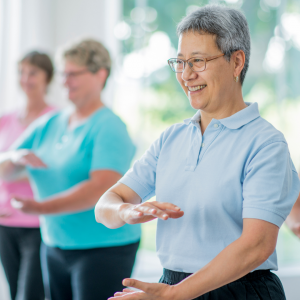 We provide education to our members and caregivers in several ways including thrive. magazine, our Caregiver Corner website and more. We also partner with health care systems to ensure providers are screening for fall risks, recommending fall prevention programs and alerting individuals of the action steps they can take to minimize their risk of falling.
We provide education to our members and caregivers in several ways including thrive. magazine, our Caregiver Corner website and more. We also partner with health care systems to ensure providers are screening for fall risks, recommending fall prevention programs and alerting individuals of the action steps they can take to minimize their risk of falling.
Blue Cross Medicare plans offer access to the SilverSneakers fitness program, which has a variety of content and programming for preventing falls including videos, articles and stability classes.
Additional benefits are available for SecureBlue members, including fall prevention classes through Juniper as well as a home safety benefit arranged through their care coordinator to provide up to $750 per year for home safety items such as grab bars, a hand-held shower spray, toilet safety rails, a step support for the bed, etc., to improve mobility and safety in the home.
Blue Cross members can call the number on the back of their ID card to learn about benefits specific to their health plan.
- To view the original version of this article visit blog.bluecrossmn.com/longevity/how-to-talk-about-the-risk-of-falls-with-the-seniors-in-your-life/
- Seniors Blue Book was not involved in the creation of this content.
Other Articles You May Like
Game-Changers for Recovery and Healthy Aging
Recovering after surgery, illness, injury, or simply maintaining vitality as we age requires more than rest it requires supporting the bodys natural repair systems. Thats where Centropix and its groundbreaking KLOUD technology come in, offering a new path to faster, safer recovery and ongoing healthy living.Accelerated Recovery Starts HereHealing doesnt end when symptoms subside true recovery involves deep cellular repair, tissue regeneration, inflammation removal, and restoring optimal oxygenation throughout the body. Without proper support, this process can be slow, leaving people vulnerable to setbacks, fatigue, and diminished quality of life.Centropixs KLOUD utilizes Pulsed Electromagnetic Activation (PEMA) technology to dramatically enhance the bodys natural ability to repair itself. Studies show that electromagnetic activation can speed recovery time by nearly 50%, by directly targeting the cellular processes critical for regeneration and waste elimination.What the KLOUD Does for Your Body:Molecular Activation: Energizes and stimulates cellular repair at a deep level, promoting faster healing and stronger recovery.Oxygenation: Increases blood flow and oxygen delivery to tissues, fueling regeneration and improving stamina.Inflammation Reduction: Helps the body eliminate inflammatory waste, easing discomfort and accelerating tissue repair.Detoxification: Supports the bodys natural ability to remove metabolic waste products that can delay healing and contribute to fatigue.Regeneration: Encourages restoration of soft tissue, nerves, and vascular health for long-term strength and vitality.Why Choose Centropix KLOUD for Recovery?Unlike passive rest alone, the KLOUD actively stimulates your body's recovery systems. Whether youre bouncing back from surgery, illness, injury, or simply looking to maintain vibrant health as you age, integrating KLOUD sessions into your daily life means:Faster recovery timesReduced risk of complicationsLess inflammation and painImproved energy and staminaBetter sleep and stress reliefEnhanced quality of lifeWith the KLOUD, recovery doesn't have to mean slowing down it can mean reclaiming your life faster and continuing to do the things you love with passion and energy.If you're ready to experience a better way to recover, regain your energy, and live fully until the very end, reach out to Lisa or Danielle today. Discover how Centropix and the KLOUD can help you or your loved ones stay active, independent, and thriving for years to come.Take the first step toward a stronger, healthier future because vibrant living is possible at any age.
Navigating Hospital Stays and Rehabilitation for Parkinsons Patients
Navigating Hospital Stays and Rehabilitation for Parkinsons Patients. This article is part of The Parkinsons Care Compass: A Caregiving Roadmap Guiding Families Through Every Stage, an educational series presented by At Your Home Caregiving of Texas. We are honored to walk beside families, offering specialized in-home care solutions to support every step of the Parkinsons journey. Hospital stays are a stressful experience for any family, but for individuals living with Parkinsons disease, hospitalization poses unique challenges that can significantly impact recovery and long-term health. When a Parkinsons patient requires surgery, treatment for complications, or recovery after a fall, family caregivers must act as advocates, organizers, and partners in care. Being prepared and informed is the key to ensuring a safe hospital stay and a smooth transition back home.At Your Home Caregiving of Texas understands these complexities and stands ready to help families through every step of the journey, providing expert support for rehabilitation and home-based recovery.Unique Hospitalization Challenges for Parkinsons PatientsParkinsons disease complicates hospital care in several critical ways: Medication Management: Parkinsons medications must be administered on a strict schedule to manage symptoms effectively. Delays or missed doses can lead to severe motor symptoms, confusion, and even hospitalization complications. Mobility and Fall Risks: Hospital environments are unfamiliar, and Parkinsons patients face an increased risk of falls due to balance issues and muscle rigidity. Cognitive Changes: Hospitalization can sometimes trigger or worsen confusion, memory problems, or delirium, especially in older adults with Parkinsons. Communication Difficulties: Some patients experience soft speech (hypophonia) or facial masking, making it difficult to express needs clearly to hospital staff unfamiliar with Parkinsons care. Being aware of these risks allows families to take a proactive role during the hospital stay, minimizing complications and ensuring the best possible outcome.Preparing for a Hospital Stay: Advocacy and PlanningIf hospitalization is scheduled (for surgery or planned treatments), preparation can make a significant difference:1. Create a Hospital Parkinsons PlanPrepare a simple one-page document outlining your loved ones: Current medications and exact times for administration Mobility limitations and fall risk status Communication needs Cognitive changes or dementia symptoms Preferences for therapy, rehabilitation, and home care after discharge Provide this information to the hospital staff immediately upon admission.2. Bring Medications to the HospitalBring a full list and ideally the actual medications in their original containers. In some hospitals, families can administer Parkinsons medications if theres a risk of delays.3. Assign an AdvocateDesignate a family member or professional caregiver to be present as much as possible, especially during medication times, shift changes, and physician rounds. Having a consistent advocate can prevent critical mistakes and advocate for the patients specialized needs.The Importance of Medication TimingOne of the biggest risks for Parkinsons patients in the hospital is missed or mistimed medications. Parkinsons medications like carbidopa-levodopa must be administered exactly as prescribed, sometimes multiple times a day, to prevent a sudden worsening of motor and non-motor symptoms.Tips for ensuring proper medication administration: Clearly document the medication schedule and insist it be incorporated into the hospitals care orders. Politely but firmly remind nursing staff of the critical importance of on-time dosing. Advocate for medication self-administration if allowed by hospital policy. Watch for any substitutions generic or alternate medications can sometimes affect symptom control. Families should feel empowered to respectfully advocate for their loved ones medical needs. Delay in Parkinsons medication can lead to avoidable setbacks in recovery.Understanding Rehabilitation OptionsAfter hospitalization, rehabilitation is essential for helping Parkinsons patients regain strength, balance, and function. Depending on the situation, rehabilitation may occur in: Inpatient Rehabilitation Facilities (IRFs): Specialized centers offering intensive physical, occupational, and speech therapy. Skilled Nursing Facilities (SNFs): Short-term stays focused on medical monitoring and therapy. Home-Based Rehabilitation: Therapy provided at home, which may be the best option for patients with significant mobility challenges or those at high risk of hospital-acquired infections. At Your Home Caregiving of Texas partners with rehabilitation therapists to support continuity of care at home, ensuring that exercises, safety measures, and care plans are followed consistently.Key Rehabilitation Goals for Parkinsons Patients Improving strength and flexibility Reducing fall risk through balance and gait training Enhancing fine motor skills (handwriting, eating, dressing) Improving swallowing and speech if affected Maintaining independence as much as possible Early rehabilitation after hospitalization is crucial for Parkinsons patients. Without it, the risk of decline, injury, and readmission significantly increases.Transitioning Safely Back HomeThe transition from hospital to home is a vulnerable time. Planning ahead is critical to prevent setbacks.Steps for a Successful Transition: Arrange Home Care Services Early: Schedule in-home caregiving services to assist with mobility, medication reminders, and personal care. Conduct a Home Safety Evaluation: Adapt the home environment to minimize fall risks remove tripping hazards, install grab bars, ensure proper lighting, and use assistive devices. Coordinate Medication Management: Update prescriptions, confirm medication supply, and create a clear medication schedule. Schedule Follow-Up Appointments: Ensure post-discharge physician and therapy visits are scheduled before leaving the hospital. Implement a Rehabilitation Plan: Continue physical therapy and exercise routines at home, guided by professional caregivers and therapists. At Your Home Caregiving of Texas specializes in providing comprehensive transitional care for Parkinsons patients. Our caregivers work alongside families and healthcare professionals to ensure that recovery continues safely and effectively at home.How At Your Home Caregiving of Texas Supports RecoveryFamilies managing Parkinsons care dont have to do it alone. Our services are designed to ease the burden of post-hospitalization recovery by providing: Personalized Care Plans: Tailored to the individuals stage of Parkinsons and rehabilitation needs. Medication Reminders and Assistance: Helping maintain the critical medication schedule. Mobility Support: Assisting with walking, transferring, and exercises to rebuild strength and prevent falls. Nutrition and Meal Support: Preparing nutritious meals that support energy and healing. Companionship and Emotional Support: Reducing anxiety, confusion, and isolation during the recovery process. Coordination with Healthcare Providers: Keeping families informed and ensuring therapy recommendations are carried out at home. We work hard to create an environment where patients can heal comfortably, maintain dignity, and reduce the risk of hospital readmission.Final ThoughtsHospital stays are never easy, especially when Parkinsons disease adds another layer of complexity. But with the right preparation, strong advocacy, and a smooth rehabilitation plan, families can help their loved ones achieve the best possible recovery.At Your Home Caregiving of Texas stands beside you every step of the way from hospital bedside to a safe and healing home environment. Our specialized Parkinsons care services ensure that patients get the compassionate, expert support they need to regain strength, confidence, and independence.When its time to transition home after hospitalization, trust At Your Home Caregiving of Texas to be your partner in care and recovery. At Your Home Caregiving of Texas is proud to support families living with Parkinsons disease through compassionate, expert care. For more resources and personalized caregiving solutions, explore the full Parkinsons Care Compass series or contact us today at 469-830-8414. Together, we can create a safer, stronger path to recovery one step at a time. If someone you care about is facing the challenges of Parkinson's, know that you're not alonewe're always here to help.
Hospice Provides Post-Discharge Support That Sepsis Patients Need
By Faith Protsman, MD, Regional Medical Director, VITAS HealthcareTwo recent studies highlight how sepsis impact often extends well beyond the acute event that led to a patients hospitalization. The studies emphasize two particular points that should inform physicians and clinicians as they consider referring these patients to specialized care: Medicare patient data gathered between 2012-2017 shows that sepsis patients face considerably poorer health outcomes following hospital discharge when compared to non-sepsis patients, including elevated risk for death and increased use of advanced healthcare services. Sepsis survivors exhibit strong indicators of persistent inflammation and immunosuppression for up to a year after hospital discharge, increasing their risk of readmission or death. Both studies indicate a significantly elevated risk of death among sepsis patients after they have been discharged and ostensibly cured. Of course, sepsis patientsparticularly those of the Medicare cohort, who are largely of advanced agerarely leave the hospital in better condition than they entered.The Yende study, in particular, shows that neuroendocrine and inflammatory responses to sepsis can continue long after the patient survives a septic episode. For patients with advanced or chronic diseasesas was the case with nearly 78% of participants in the studythese biomarkers are associated with decline.Post-sepsis Discharge: A Critical JunctureIn many cases, these individuals life expectancies upon discharge will be less than six months. This is a critical juncture: While comfort-focused hospice care could provide an ideal source of support for the eligible patient, their family, and their caregiver(s), most sepsis patients are simply sent home without even a discussion about palliative end-of-life care and its benefits.Frankly, such an oversight is a disservice to everyone involved. The sepsis patient is left with physical and/or cognitive dysfunction, often without significant options for symptom management. Their partner or family will either need to assume caregiving duties or turn to costly private services. And the physician and hospital staff will likely see the patient again following another acute event, a readmission that impacts performance scores, strains resources, and unnecessarily fills beds.By no means do I intend to lay the blame for these unfortunate circumstances on physicians. Timely hospice referrals require ongoing education about end-of-life care, and open, ongoing communication between hospice providers and referral sources.More Help: How to Talk About Hospice Care >Those of us in hospice are working hard to bridge the gap, but even as our healthcare system transitions to a value-based model, the mentality of fee-for-service still permeates our nations acute-care facilities, and many hospitalists see a discharge home as a success.Hospice: A New Way Of Judging SuccessIn hospice, we judge our successes on the patients quality of life and the fulfillment of their goals and wishes near lifes end. Usually, that means going home with 24/7 support from an interdisciplinary hospice team. Whether home is a traditional residence, an assisted living facility, or nursing home, the hospice team will assist caregivers (and/or facility staff) with direct clinical care and education, integrative services, bereavement support, and delivery of medication, equipment, and supplies.In other cases, improving quality of life means remaining in a general inpatient setting with hospice support, taking the burden off hospital staff until the patient is able to transition home or until the patient dies. Hospice offers complex modalities in any setting, so patients who would otherwise be confined to an ICU can usually return home to be among loved ones.With support from hospice, a sepsis patient and their family are more likely to report higher satisfaction of care and greater quality of life. The patients emotional and spiritual needs can be met alongside their physical needs, thanks to care from chaplains, social workers, music and massage therapists, and other integrative specialists. Finally, the patient is more likely to die at home, surrounded by loved ones, rather than in the hospital.Because sepsis is most common in patients with advanced or chronic diseases that indicate hospice eligibility, acute incidences of sepsis should always trigger a hospice eligibility assessment. We owe it to our patients, their loved ones, and our colleagues in healthcare, all of whom can benefit from the support that timely end-of-life care offers.
